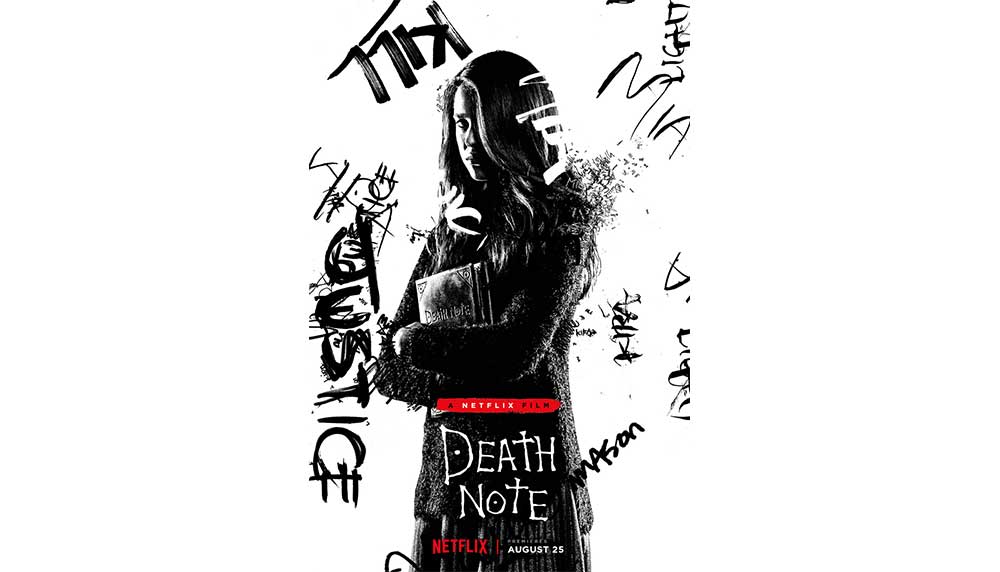What’s to watch on Netflix?
- 13 Apr - 19 Apr, 2024

Filmmakers have two ways of thinking when adapting prior-made materials for movies: the first one is that the story would have to be retold with a new narrative that suits the time and the culture of the country (for example, shifting from Japan to America); the other is to not adapt to the extent that the whole thing loses the original structure and storyline. Both arguments have merits, both apply to comic books adaptations, books and produced fine examples. But when it comes to Manga and Anime (Japanese comics and cartoon), Hollywood adaptations only get messy and ugly.
We already had a debacle this year with Ghost In The Shell, which is an example of a badly written, directorially-lost venture (even when you don’t compare it to the far superior original). The same has happened in Death Note. The plot is vaguely the same: Light Turner (Nat Wolff) is a teenage high school boy who is bullied, and writes homework for others for money. He also has a strained relationship with his dad (Shea Whigham).
One day a rundown, dark leather-bound book falls from the sky. When Light picks it up, he sees “Death Note” written on its cover. Flipping through it, he uncovers the power it yields, and the hundred clauses it forces on the user. The main rule is that whoever writes the name of a person in the Death Note while imagining their faces, that person will die. This supernaturally-powered killing book also has a demon death god attached to it, named Ryuk (voiced and performance by Willem Dafoe). A spiky, apple-eating dark demon, Ryuk is visible only to the possessor of the Death Note. Light gets right with the program and starts kicking off bad people in the world under the name of Kira. He is aided by his girlfriend Mia (Margaret Qualley), who is more than happy to see him killing. Light’s nemesis is a super detective known only as L (Lakeith Stanfield, captivating). L, as it turns out, is a little on the weird side.
Death Note’s flaw is not that it deviated from the original premise – which it hasn’t. When you see the plot points from afar, it’s quite close to the original. However, having tinkering with characters, their psychology and the motivations has flawed them. Light, originally an antihero, is turned into a good-souled American teen. When the plot covers that point, it gets too little too late for the viewer. Even when adapting or retelling the story for the larger, global audience, few things should be kept in mind as holy grails. For instance: what did the original story intend to convey, and what is the underlying backbone of the story.
In Death Note, the makers have taken the gimmicky, commercial part of Death Note – which is simply a new weapon to kill people off from the comfort of your home – and made a film out of it. Maybe director, Adam Wingard, and writers Charles Parlapanides, Vlas Parlapanides and Jeremy Slater, are fans of the Final Destination series. Their Death Note turns out to be a shabbily-made movie, that strays far away from introducing new audiences to the world of Death Note; in fact, they might even deter them from approaching the original in any format. •
COMMENTS